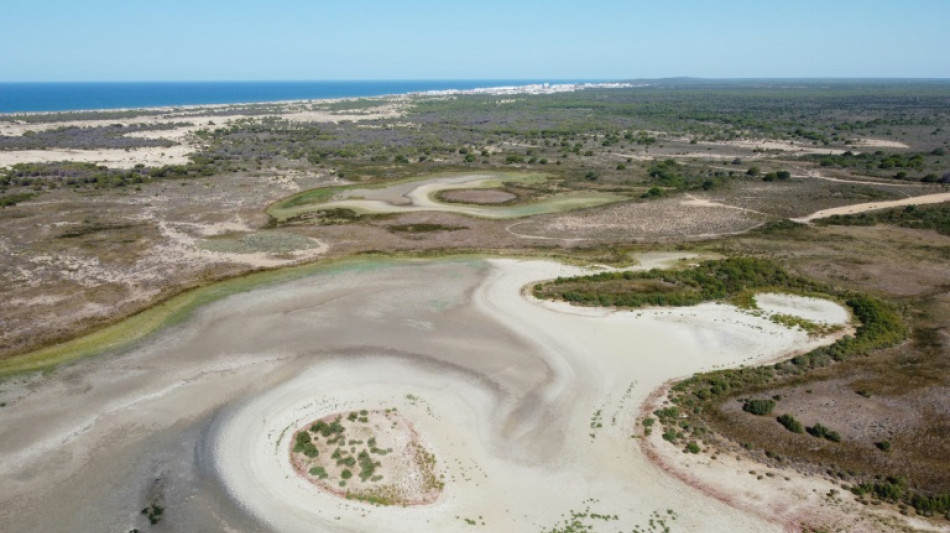
SCS
0.0000


The largest permanent lagoon in drought-hit southern Spain's Donana natural park, home of one of Europe's largest wetlands, has completely dried out for the second summer in a row.
A huge patch of cracked white earth has replaced the waters of the Santa Olalla lagoon, which usually houses abundant aquatic life and huge colonies of migrating birds.
The lagoon -- which once covered around 45 hectares (110 acres) -- has been shrinking in recent years but this is the first time that it has dried out for two consecutive years, according to the Spanish National Research Council (CSIC).
Scientists blame the lagoon's disappearance on a prolonged drought combined with the overexploitation of aquifers for farming and tourism.
"Recent years have been very dry, which is not rare for a Mediterranean climate," Carmen Diaz Paniagua, a researcher at the Donana Biological Station, told AFP.
Most lagoons in the reserve are temporary, filling with rainwater in winter and then drying out in the summer but a few contain water year-round, providing an important refuge for animal life.
"The real problem is the mismanagement of the aquifers. We don't even know how much water is being extracted because there are many illegal wells," she added.
The Donana national park is surrounded by a sea of greenhouses and the Matalascanas resort town is located less than a kilometre from the northernmost lagoons of the reserve.
"This is not a natural thing happening only because of climate change. It can be reversed, if we can reduce the water extractions the lagoon could resist," said Diaz Paniaga.
Water use restrictions are in place on other parts of Spain but that is not the case in towns near Donana where beaches still operate showers, she added.
The Dona reserve boasts marshlands, scrub woodland and beaches and is home to deer, badgers and endangered species including the Spanish imperial eagle and the Iberian lynx.
But at the Santa Olalla lagoon where wild horses once drank water surrounded by storks and flamingos, they now graze alone on the few tufts of grass they find growing from the cracked earth.
Despite warnings from UNESCO and the European Commission, the conservative regional government of Andalusia where Donana is located is pushing to extend irrigation rights near the park.
A draft law currently making its way through the regional parliament would regularise hundreds of hectares of berry farmland currently irrigated by illegal wells.
Defenders of the proposal argue it will aid those who unfairly missed out during a previous regularisation of farms in the area put in place in 2014 under a Socialist government.
"The water management policy is really not conducive to the conservation of Donana's lagoons," said Diaz Paniagua.
A.Zhang--ThChM